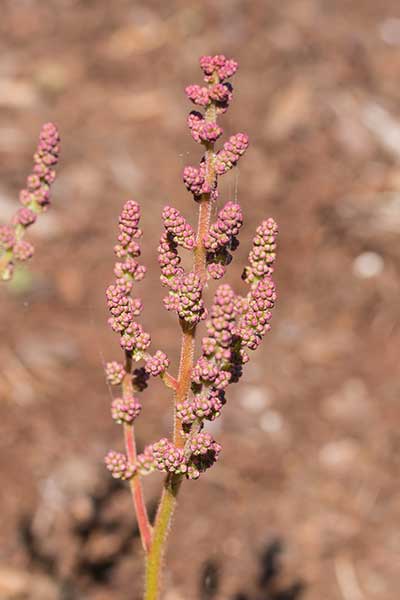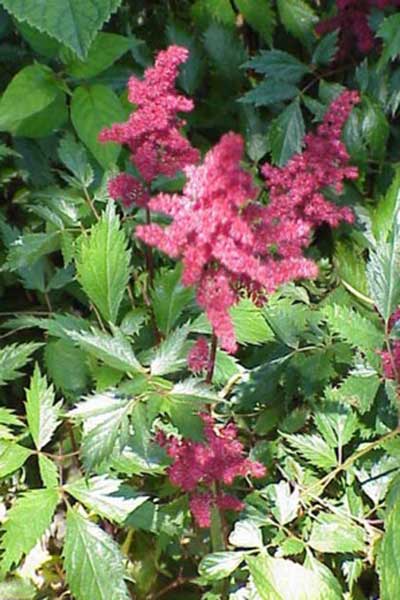Astilbe
- Scientific Name: Astilbe
- Garden: Dog Friendly Garden
- Plant Type: Herbaceous Perennial
- Evergreen/Deciduous: Deciduous
- Sun/Shade Exposure: Part Shade to Full Shade
- Moisture Requirements: Moist, well-drained
Plant Information
Astilbe have been cultivated since the late 1700s and have become a staple in the shade garden. They offer a feathery texture with the foliage and great vertical, fluffy spires of flowers.
Blooms in June, July, or August come in shades of pink, lavender, red, and white and are wonderful as cut flowers when many blooms of the shade garden have past.
Besides their lovely appearance, Astilbe are one of the best choices for the ever-so-common semi-shady moist spot in the garden. With that in mind, they combine well with Hosta, Acorus, Ligularia, ferns, Pulmonaria, and Japanese iris. Since they have been admired for centuries there is an overwhelming array of varieties and hybrids available.
Culture: Astilbe are hardy, deciduous perennials that thrive in partial or dappled shade and moist soils. They can grow in well-drained soils with regular water and along the moist edge of a pond. It is essential Astilbe do not dry out in summer.
Maintenance: Astilbe require little maintenance other than division of old plants when the center of the clump dies out (about every three years). Encourage maximum blooms with yearly fertilizing with compost and/or a granular all-purpose fertilizer.
Additional qualities: Attracts butterflies, hummingbirds and beneficial insects. Deer resistant. Good cut flowers. Tolerates moist soil.
Pest and Disease: As with other members of the Saxifrage family, Astilbes are susceptible to root weevil. They can be controlled with beneficial nematodes in the spring.
Data Source
https://www.portlandnursery.comPlant Photos







